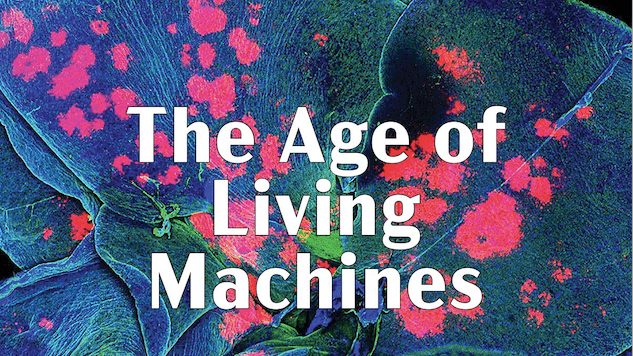Susan Hockfield’s New Book Reveals How Biology Is Revolutionizing Technology

The prevailing narrative is that tech is shaping the future of life. The results from our most advanced labs say the opposite: life, in all its complexity, efficacy and variety, is shaping the future of technology.
The Age of Living Machines: How Biology Will Build the Next Technology Revolution tours some of those labs with a scientist whose life’s work puts at the intersection of biology and technology. Neuroscientist Susan Hockfield turned heads when she was hired in 2004 as the first female president of MIT, a school famous for its engineering programs. Appointing a biologist proved to be an intelligent decision—it is MIT, after all—as Hockfield’s background in life science is now applied in some of the United States’ most advanced labs.
 The intersection of life and technology existed long before engineers were inspired by it. We used to talk, dream about and compare our bodies to machines: a skilled mathematician was a living computer, an effective team was well-oiled. Athletes had wheels, engines, pistons and springs; people had minds like steel traps or cameras. “Automatic” could be the finest compliment or the coldest insult. To be compared to machines was to be elevated—or turned into a monster.
The intersection of life and technology existed long before engineers were inspired by it. We used to talk, dream about and compare our bodies to machines: a skilled mathematician was a living computer, an effective team was well-oiled. Athletes had wheels, engines, pistons and springs; people had minds like steel traps or cameras. “Automatic” could be the finest compliment or the coldest insult. To be compared to machines was to be elevated—or turned into a monster.
Paradigm shifts are often coded in language, and the language of technology is now that of life. Artificial intelligence utilizes a neural net; networks are social; computers have vision.
We work hard to bestow a facsimile of life into our creations; take, for example, a machine learning algorithm which taught itself the strategy game Go, which is considered far more elaborate than chess. The program trounced the world’s best Go players, who reported something strange: the algorithm did not play like a person nor like a program designed to play Go. Instead, it played its own way via strategies developed in a black box. It didn’t act like a pre-programmed opponent or a fellow human being, instead functioning in an alien way.
We know that artificial intelligence and machine learning are inspired by human brains, that drones and robots are influenced by insects and animals. But Hockfield’s semi-incestuous—take a shot every time MIT is mentioned and die—examples go even further, incorporating biological elements as key components. The Age of Living Machines features virus-built batteries, cancer-detecting nanoparticles and protein-based water filters.
Science is in the midst of a revolution, one made clear in Hockfield’s book, changing the way we discuss and discover the advances to come. Scientists are applying principles from one field to another, combining forces and ideas to tackle questions far too big for any one discipline alone. It’s cross-pollination with coked up bees, biology injecting new life into our future.
Hockfield’s thesis is that technological advances borne of biology will help us surmount future obstacles; maybe these advances will also humanize a future trying to erase us through automation.
B. David Zarley is a freelance journalist, essayist and book/art critic based in Chicago. His work has appeared in The Verge, The Atlantic, Quartz, Hazlitt, VICE Sports, Chicago Magazine, Sports Illustrated, New American Paintings, the Myrtle Beach Sun News and numerous other publications.